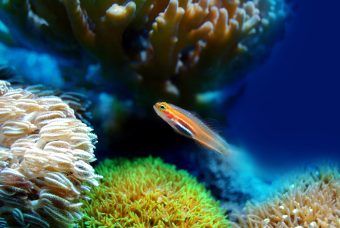I think you’ll agree that a beautifully arranged aquarium – clean, subtly lit, and filled with exotic fish – is one of the loveliest sights in any interior space. I remember, as a child, staring hypnotized for hours at this small, glass-encased ecosystem, wondering why every house didn’t have one.
The realization came years later when I became the owner of two goldfish and quickly discovered how these seemingly clean creatures could be surprisingly messy. If memory serves me right, I cleaned that aquarium every two days, but my efforts were short-lived – eventually, I gave them away to a friend who had a better knack for aquarium care.
Unfortunately, not everyone who regrets getting an aquarium is lucky enough to give it away (read: unload it), and many fish suffer a tragic fate, while the aquarium’s contents – whoosh, down the drain!
Now, I don’t want to spoil your mood – I’m sharing this as an introduction to an intriguing story about Lake Palić, recently reported by RTS.
When you own any pet, it comes with great responsibility – not just to the animal but also to the environment. For instance, the abandonment of stray dogs is a glaring example of irresponsibility, as it jeopardizes city hygiene, public safety, and the animals’ well-being.
Compared to this, pouring aquarium water down the drain may seem harmless, right? But the reality is quite different because tropical species from aquariums can end up in natural ecosystems, and then…

Why Has Lake Palić Turned Green?
Water lettuce, a lush decoration in many aquariums and a refreshing sight for tired eyes, doesn’t belong in Serbia’s stagnant freshwater bodies. As I mentioned earlier, this is a tropical plant and, more importantly, an invasive species. So how did an entire segment of Lake Palić, reserved for water purification, become covered in this plant, transforming it into more of a green carpet than a water surface?
You guessed it – the plant traveled from an aquarium through the sewage system to Lake Palić, where it quickly spread across the water, leaving no room for other plant species, as invasive plants tend to do.
Žika Reh from Subotica’s Department for Environmental Protection and Sustainable Development told RTS that the plant can even help eliminate harmful compounds from the water, such as nitrogen and phosphorus. However, this decorative aquarium plant is under the watchful eye of local authorities, who are forced to control it mechanically wherever necessary.
Similar incidents are happening worldwide, where other invasive tropical species, like water lettuce, infiltrate ecosystems and radically alter their landscapes and dynamics.
A Warming Climate Creates New Habitats
One particularly interesting question arises: How do tropical species, which aren’t known to handle low temperatures well, survive in continental climates? The answer, of course, lies in climate change. Warmer autumns and winters, combined with unbearably hot and humid summers, make tropical species feel right at home.
As average temperatures continue to rise year after year and winter snow becomes increasingly rare, tropical plants like water lettuce thrive, pushing out native species. In a few years, we might find our flora and fauna drastically altered, with exotic plants and animals replacing native ones, as the changing climate no longer suits the original inhabitants.
The case of Lake Palić reminds us that this scenario might not be as distant as we think – it’s just one of many consequences of climate change we need to prepare for.

